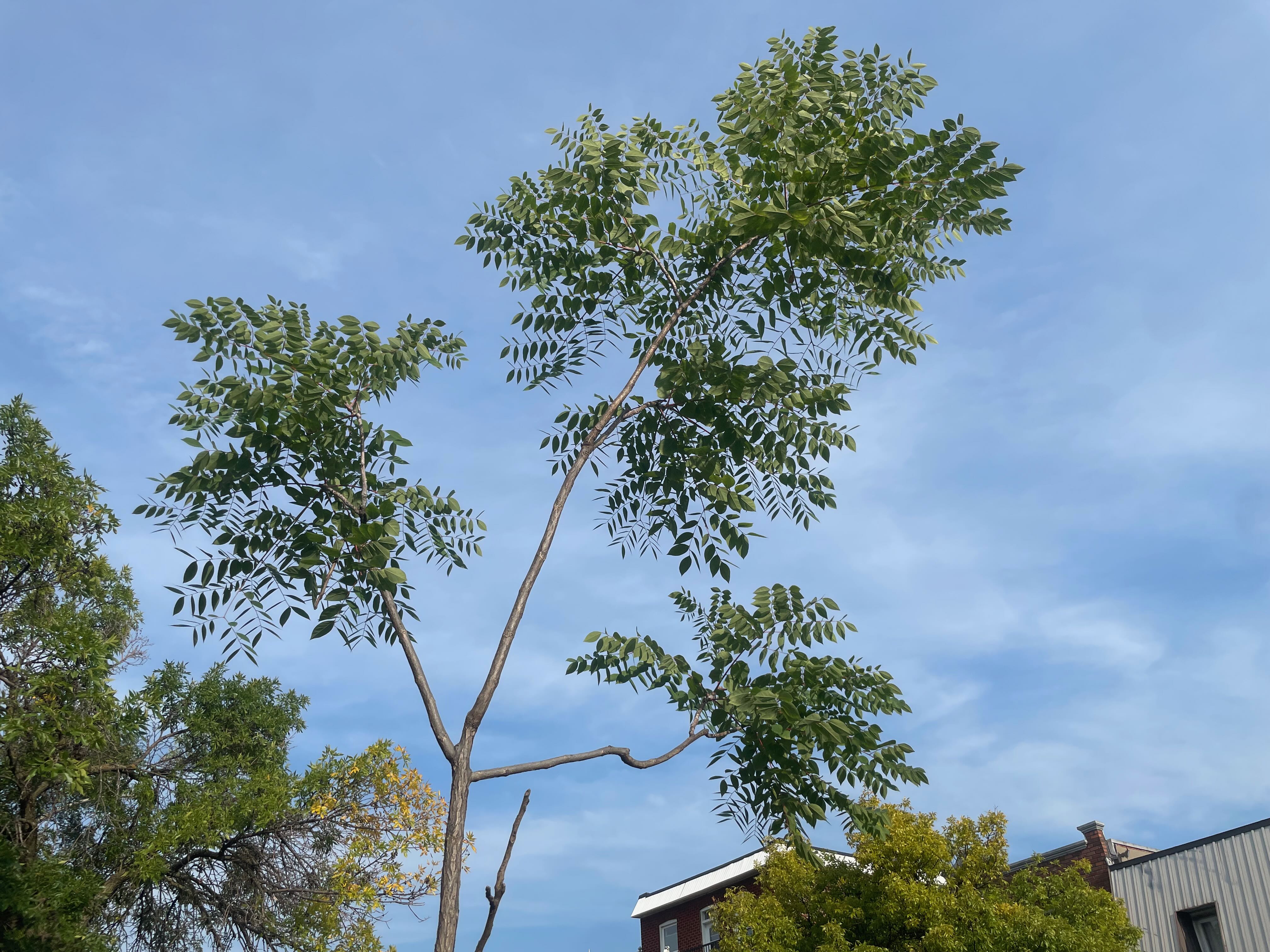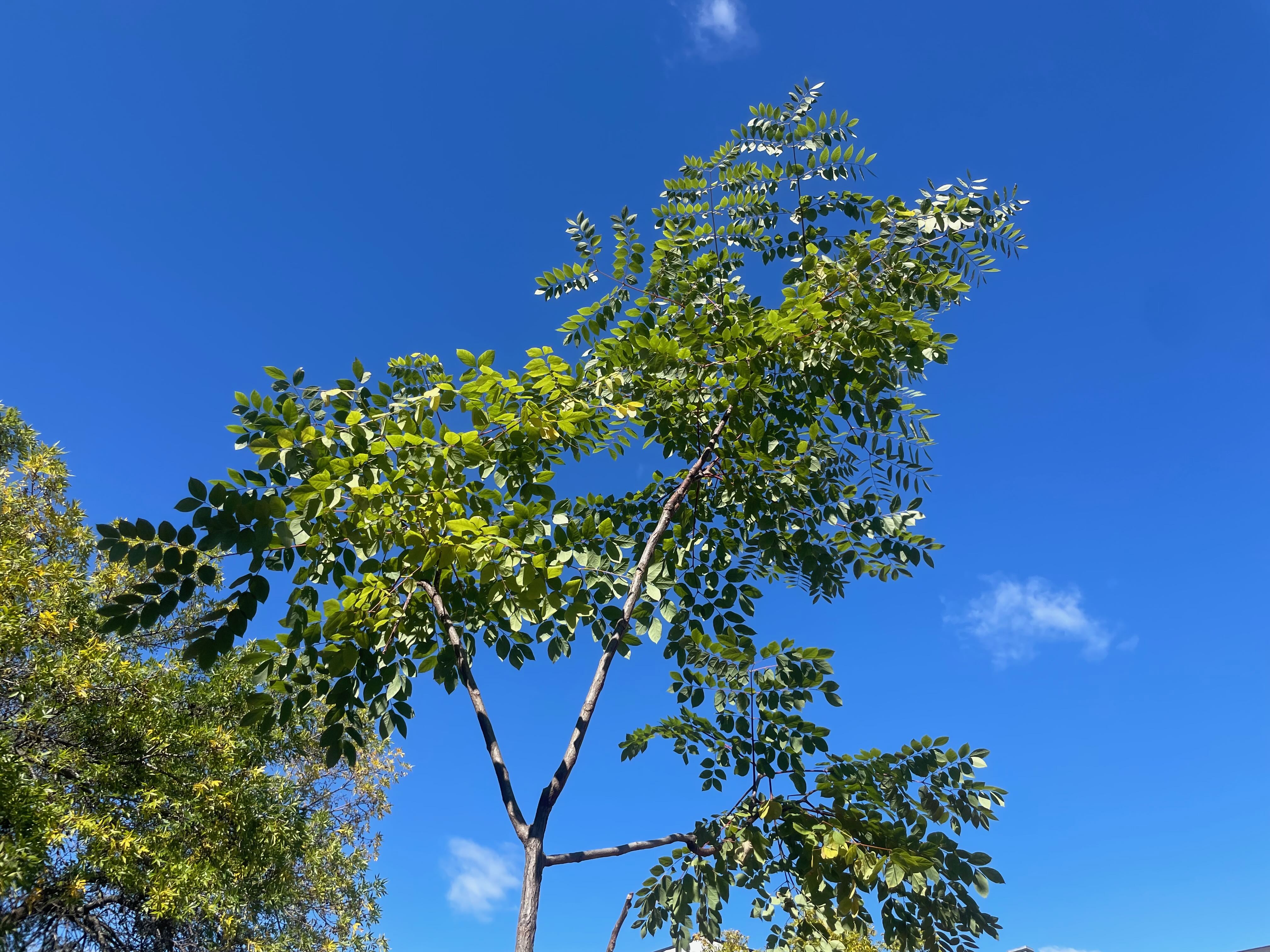
Chicot
This time last year, the city planted a new tree in front of my house, replacing one cut down a few years earlier. My co-owner friends and I immediately nicknamed it Chicot, partly because that's the name in French of its species, Chicot du Canada, but also because it was so skinny (chicot, in French, suggests smallness. In English, the tree is called [Kentucky coffee tree](https://en.wikipedia.org/wiki/Kentucky_coffeetree). Go figure).
Still, we were glad to see it there, as the _Gymnocladus dioicus_ is reputed to provide good shade when ripe. However, we were puzzled by its appearance. Given its thinness, we wondered when it could offer us the desired cover.
You have to be patient with trees. You can't pull their leaves or feed their roots so much that they grow faster, a universal principle that calls for patience in all things. The best rhythm is given to each being, be it a bacterium or a whale.
Obviously, as it was planted in early autumn, Chicot lost its leaves at the end of the season, revealing even more of its fragile bones. Like all its congeners, it passed the winter without asking for a second thought.
It was a late bloomer in spring. I was relieved to see the first buds appear when all the other trees were already green.
Here we are, one year to the day after its planting. I thought it would be fun to document its growth by taking a photo from roughly the same angle.
It thought Chicot would have grown in stature. The tree looks even sparser... Is it that hard to be at the edge of a busy street?
I have time to sell the house before I can enjoy the freshness of its cover. Instead, I will calm my impatience by buying a central air conditioner.
Long live Chicot all the same. It will outlive me, the humble lineage of vegetation on Earth before us. It will certainly be after we all die from asphyxiation or bombs.

